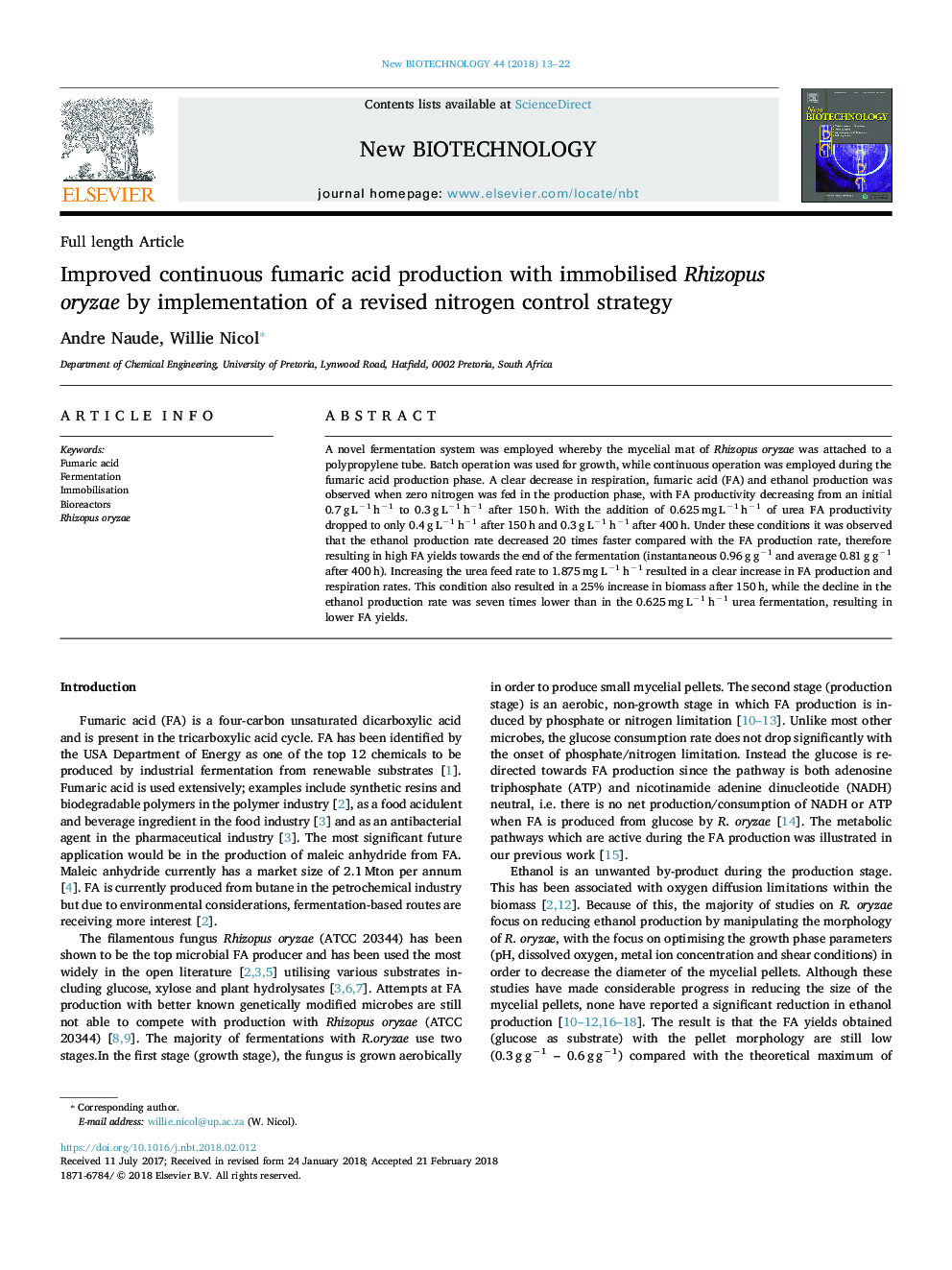| Article ID | Journal | Published Year | Pages | File Type |
|---|---|---|---|---|
| 6494787 | New Biotechnology | 2018 | 10 Pages |
Abstract
A novel fermentation system was employed whereby the mycelial mat of Rhizopus oryzae was attached to a polypropylene tube. Batch operation was used for growth, while continuous operation was employed during the fumaric acid production phase. A clear decrease in respiration, fumaric acid (FA) and ethanol production was observed when zero nitrogen was fed in the production phase, with FA productivity decreasing from an initial 0.7â¯gâ¯Lâ1â¯hâ1 to 0.3â¯gâ¯Lâ1â¯hâ1 after 150â¯h. With the addition of 0.625â¯mgâ¯Lâ1â¯hâ1 of urea FA productivity dropped to only 0.4â¯gâ¯Lâ1â¯hâ1 after 150â¯h and 0.3â¯gâ¯Lâ1â¯hâ1 after 400â¯h. Under these conditions it was observed that the ethanol production rate decreased 20 times faster compared with the FA production rate, therefore resulting in high FA yields towards the end of the fermentation (instantaneous 0.96â¯gâ¯gâ1 and average 0.81â¯gâ¯gâ1 after 400â¯h). Increasing the urea feed rate to 1.875â¯mgâ¯Lâ1â¯hâ1 resulted in a clear increase in FA production and respiration rates. This condition also resulted in a 25% increase in biomass after 150â¯h, while the decline in the ethanol production rate was seven times lower than in the 0.625â¯mgâ¯Lâ1â¯hâ1 urea fermentation, resulting in lower FA yields.
Related Topics
Physical Sciences and Engineering
Chemical Engineering
Bioengineering
Authors
Andre Naude, Willie Nicol,
